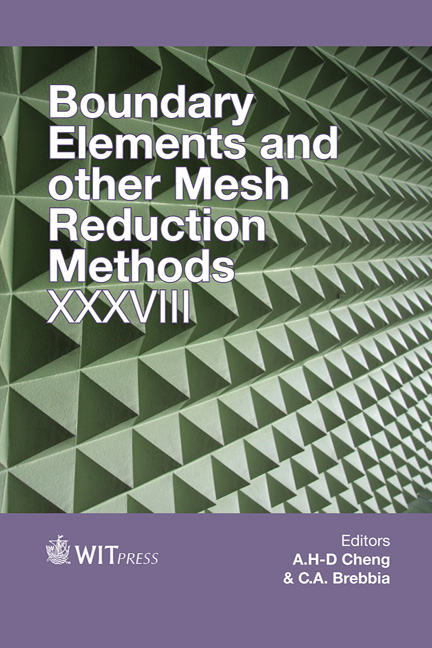Nanofluid Natural Convection Around A Cylinder By BEM
Price
Free (open access)
Transaction
Volume
61
Pages
11
Page Range
261 - 271
Published
2015
Size
1,034 kb
Paper DOI
10.2495/BEM380211
Copyright
WIT Press
Author(s)
J. Ravnik, L. Škerget, B. W. Yeigh
Abstract
In this paper we focus on the determination of vorticity boundary conditions for the solution of Navier–Stokes equations in velocity-vorticity form. Boundary element method is used to calculate the vorticity boundary conditions on an arbitrary curved surface. The method is used in an in-house fluid and heat transfer solver.
Results of simulations of flow and heat transfer of nanofluids are presented. We consider a heated elliptical cylinder in a cooled cubic enclosure where natural convection develops. Steady laminar regime is considered with Rayleigh number values up to a million. Al2O3 nanofluid is considered, as well as pure water for validation purposes. Properties of the nanofluid are considered to be constant throughout the domain and are estimated using models for different nanoparticle volume fractions (0.1 and 0.2).
The results show highest heat transfer enhancement in the conduction dominated flow regime, where the enhanced thermal properties of nanofluids play an important role. When convection is the dominant heat transfer mechanism, using nanofluids yields a smaller increase in heat transfer efficiency.
Keywords
nanofluids, boundary element method, vorticity boundary conditions, heat transfer, velocity-vorticity





